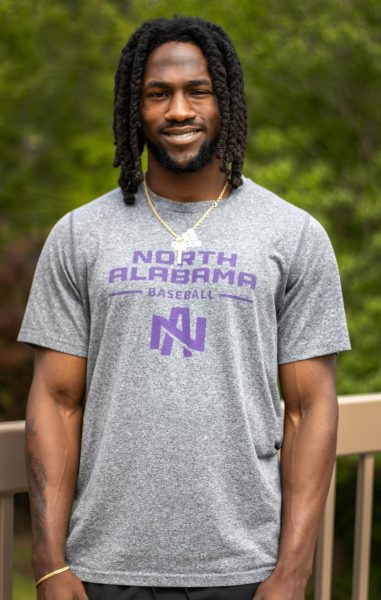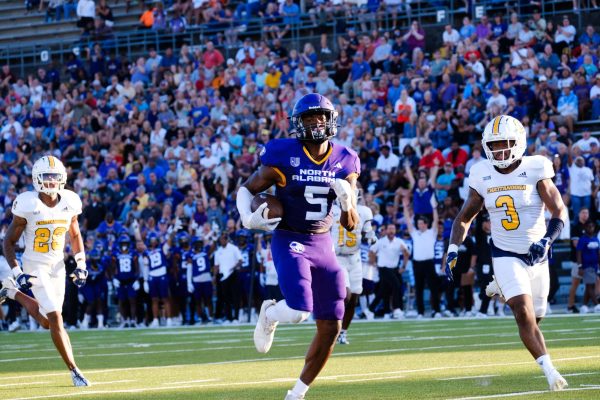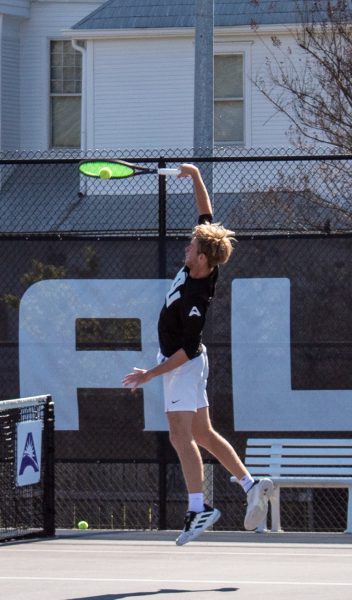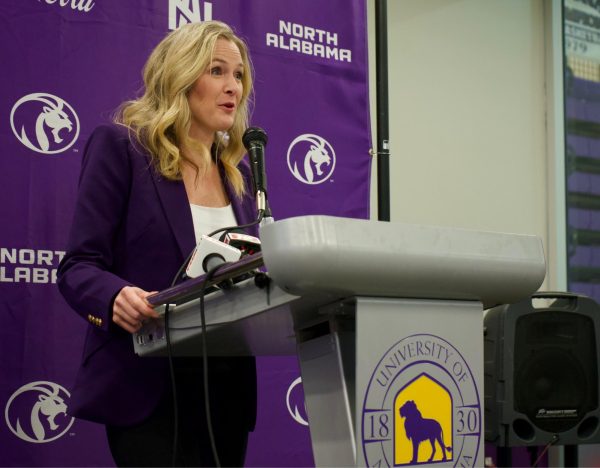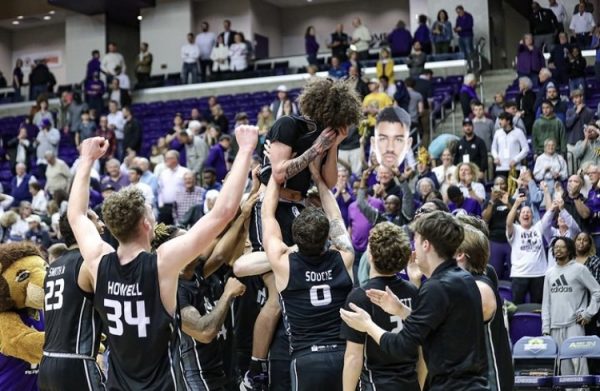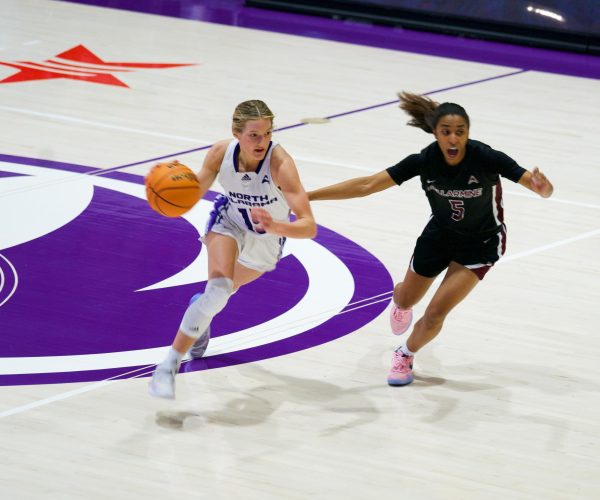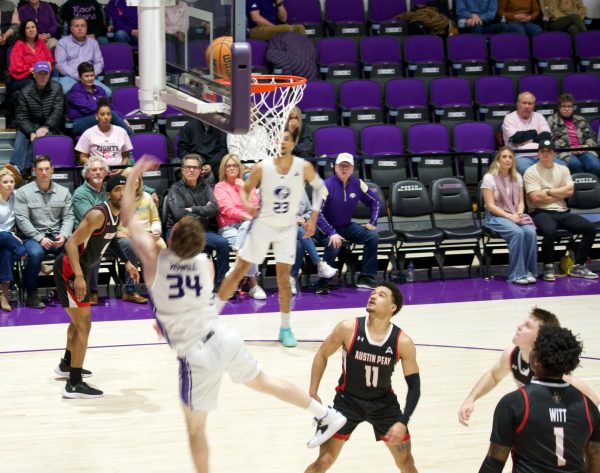Athletes balance class schedules and practice
January 27, 2011
Balancing a class load of 16 hours in the fall along with playing and cheering at football games can be difficult. UNA students, Hunter Waldman and Shelby Hood give an inside look at their hectic schedules as a football player and a cheerleader.
A typical day for Waldman consists of taking classes from 8-12, followed by three hours of football practice, an hour working out, 30 minutes to an hour watching film from the previous game, and by 8:30 that night finding time to catch up with friends and do homework.
Cheerleading is a continuous cycle for Hood. Tryouts begin in late spring and after the names are posted, the squad begins to strengthen as a team with practices throughout the summer. During that time, the squad dedicates their time to learning cheers and band dances.
Football season rolls around and practices are held each Tuesday and Thursday night for two hours with an additional hour of tumbling. Male cheerleaders are required to attend morning workouts two-three times a week while the women have to attend at least three workout classes a week at the SRC.
Once football season ends, the squad can be found at the basketball games, following the same practice schedule. By the time basketball season is over, it’s time for the cycle to start over.
Football practices also extend throughout the school year. After the season is finished, the men are allowed two weeks off for Christmas, then return in January for lifting. Winter training starts in February, with early morning mat drills. Spring ball is played in March and April, followed by months of practices leading up until the fall opening game.
With all the practices and games, Waldman and Hood remain focused on their education. Hood said that, “School and good grades have always been important to me, so making time for studying is a must!” Meanwhile, Waldman devotes his Sundays to church and studying for his classes.
Having friends on campus helps athletes make time for social lives. However, with family members living hours away, it can be difficult to leave behind hectic schedules for the drive. Parents attend some of the games, but time is limited between them and the athletes.
Other than thirty minutes Waldman had with his family at a game, he has not spent time with them since July. “I talk to my mom and little sister on the phone but as for sitting down and talking, that won’t be until Christmas.”
Hood explained that the squad will occasionally have a weekend off to visit their families but she added, “I think our friends and family have all learned by now that we have very little free time, so they understand.”
They both agree that it can be overwhelming at times to keep up with everything, but only when they stop to think about it.
Hood concentrates on the current week, using any additional free time she has to try to get ahead for the following week.
Waldman acknowledges that stressing out about everything doesn’t help any, so he takes it all a day at a time. “The first thing I think of in the morning is football. It helps me get away from everyday stress. It’s 2-3 hours of being with my second family.”
Juggling academics, athletics, and a social life is worth all the hard work to these individuals.
“There’s nothing like cheering in front of all those fans on game days! I’ve been cheering since I was in the first grade and I wouldn’t have it any other way!” said Hood.
Waldman added, “There’s a lot going on, but I wouldn’t trade it for anything. Football is my passion.”



